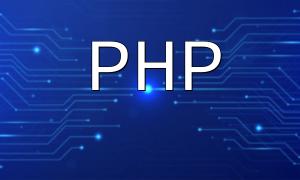In modern internet applications, high performance and fast response times are basic user expectations. As a widely used backend language, PHP also needs to continuously improve its performance and responsiveness to meet business requirements. Microservices architecture is an effective solution that not only enhances PHP application performance but also improves system scalability and maintainability. This article explains how to optimize PHP performance with microservices and provides practical code examples.
Microservices architecture is a design approach that splits an application into multiple small, independent services. Each microservice runs in its own process and communicates through lightweight protocols. Each service has its own database and can be developed, deployed, and maintained independently, improving system scalability and maintainability.
Split the Application: Break a large PHP application into multiple small services, such as user service, product service, and order service. This makes each service's responsibilities clear, facilitates development, testing, and maintenance, and allows each service to be deployed and scaled independently, improving overall performance and responsiveness.
Lightweight Communication Protocols: Communication between microservices can use RESTful APIs or message queues, reducing communication overhead and improving response speed. Combined with caching techniques, repeated requests can be minimized, further boosting performance.
Load Balancing: Distribute requests using load balancing to prevent a single service from being overloaded. Common algorithms include round-robin, random, and least connections. This significantly improves PHP application's concurrent processing capacity.
Caching Techniques: Use caching to reduce database access and improve performance. Tools like Redis or Memcached can cache frequently accessed data, reduce database load, and increase response speed.
Concurrency Handling: Microservices architecture allows independent deployment and scaling of services, enabling efficient concurrent processing. PHP can leverage coroutine techniques (e.g., Swoole extension) to achieve high concurrency and further enhance application performance and response speed.
The following example shows a basic implementation of a user service:
<?php
class UserService
{
public function getUserInfo($userId)
{
// Query the database for user information
// ...
return $userInfo;
}
public function createUser($userData)
{
// Insert new user into the database
// ...
return $userId;
}
public function updateUser($userId, $userData)
{
// Update user information in the database
// ...
return true;
}
public function deleteUser($userId)
{
// Delete user information from the database
// ...
return true;
}
}
This code defines a user service that includes functions to get, create, update, and delete user information. Encapsulating these functions into a separate service allows for independent deployment and scaling. Combined with load balancing and caching, performance and response speed are improved.
By adopting a microservices architecture, PHP applications can be split into smaller services, enhancing scalability and maintainability. Using lightweight communication protocols, load balancing, caching, and concurrency handling can significantly improve PHP application performance and response speed. The provided code examples help readers understand how to optimize PHP functionality with microservices.









